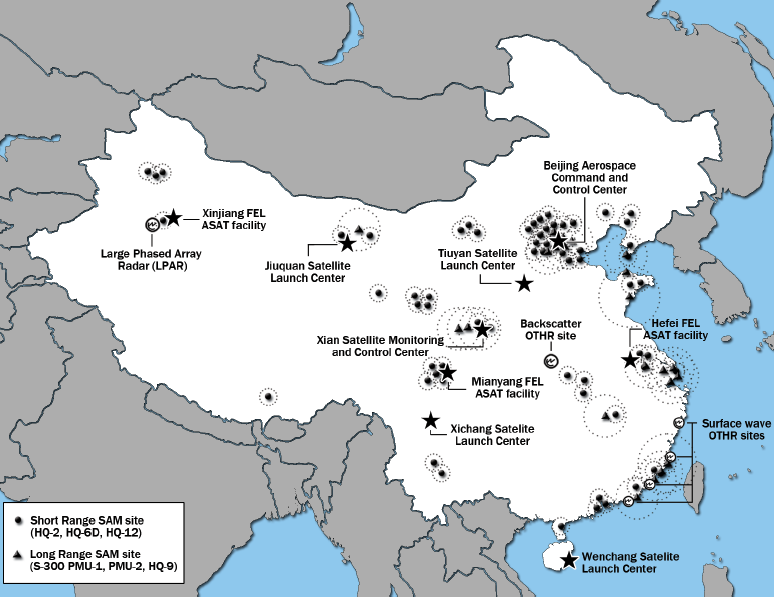
Chinese DF-21 missile
The top U.S. commander in the Pacific says the Chinese military has developed and begun deploying a new missile capable of sinking U.S. aircraft carriers. Adm. Robert Willard says the DF-21D is designed to be fired into space as a ballistic missile, homing in on its target as it returns to Earth. A top Pentagon official warned earlier this month that such Chinese weapons “threaten our primary means of projecting power: our bases, our sea and air assets, and the networks that support them.” Anything that seriously threatens U.S. aircraft carriers in the western Pacific calls into question the Pentagon’s entire war plan for defending Taiwan against aggression from the Chinese mainland.
Such carefully-calibrated chatter is all part of a sizing up that has been underway for several years between the U.S. and China. Apparently, there’s a rule in some quarters that the top two major powers must be foes, even if they’re major business partners dependent on one another. While that’s certainly true on the gridiron, it may make less sense when it comes to the globe writ large, with both players nuclear-armed.
But some people seem to think planning for war is the only way to prevent it. Earlier this year, the Center for Strategic and Budgetary Assessments, a Washington think tank staffed with former Pentagon officials, detailed just how the U.S. could best attack China:
This is not to suggest that the United States seeks a confrontation with China, let alone a war. Indeed, even during the period of unparalleled US military dominance following the Cold War, the United States sought to engage China, not attack or coerce it. A “roll-back” of the People’s Liberation Army’s military power is not the objective here. Nor is containment of China proposed. Rather, we advocate simply offsetting the PLA’s unprovoked and unwarranted military buildup. Doing so requires an examination of how the US military might minimize Beijing’s incentives to achieve its geopolitical ambitions through aggression or, more likely, coercion. This requires that the US military sustain its ability to project sufficient power in the region to defend US interests and protect its friends and allies. This is the key to maintaining the stable military balance that has preserved the peace in the Western Pacific.
Skeptics dismiss such sentiments. “It’s interesting for our president to meet China’s and sign a joint declaration where both sides say they don’t consider the other to be an enemy and then to have a Pentagon-favorite military think tank publish maps of strike sites all over China that we’d want to hit in the opening days of our war with the Mainland over Taiwan,” noted former Pentagon heavy thinker Thomas P. M. Barnett last week. “When you’re that open with your plans, it’s hard to describe anything the Chinese do in return as particularly `provocative.'”

Potential U.S. targets in a "blinding" strike on China / CSBA
Before we get too carried away by new Chinese missiles and “stealth” warplanes, you might want to take a breath:
The bluster about the emergence of a [Chinese] superpower is undermined by national defense industries that can’t produce what China needs. Although the United States is making changes in response to China’s growing military power, experts and officials believe it will be years, if not decades, before China will be able to produce a much-feared ballistic missile capable of striking a warship or overcome weaknesses that keep it from projecting power far from its shores.
That story appeared in the Washington Post on Christmas Eve, four days before Willard’s comments confirming the new Chinese carrier-killing missile surfaced in the Asahi Shimbun.


